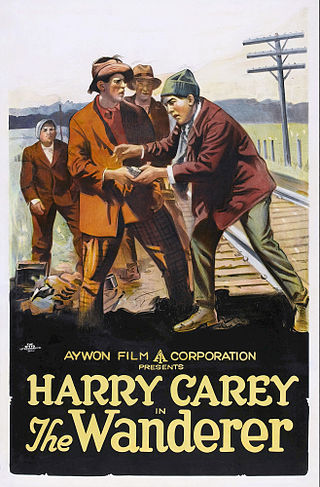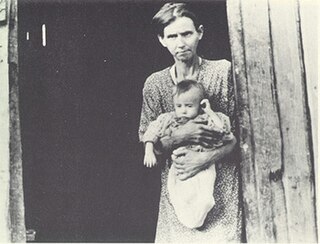Related Research Articles

Dame Mary Louise Webster,, known professionally as May Whitty and later, for her charity work, Dame May Whitty, was an English stage and film actress. She was one of the first two women entertainers to become a Dame. The British actors' union Equity was established in her home in 1930.

William Augustus Wellman was an American film director, producer, screenwriter, actor and military pilot. He was known for his work in crime, adventure, and action genre films, often focusing on aviation themes, a particular passion. He also directed several well-regarded satirical comedies. His 1927 film, Wings, was the first film to win an Academy Award for Best Picture at the 1st Academy Awards ceremony.

Ralph Steiner was an American photographer, pioneer documentarian and a key figure among avant-garde filmmakers in the 1930s.
Sam Brody was an English-born founding member of the Workers Film and Photo League, an independent organization founded in 1931 to produce and present films documenting the Great Depression from a Marxist perspective. He is also known for his work as a photographer and film critic, and for his 15-year relationship with New York City painter Alice Neel.

Hi De Ho is a 1947 American musical race film directed by Josh Binney. Distributed by All American Entertainment, the film stars an all African American cast, led by Cab Calloway. It first showed at the Squire Theatre in New York, and would be shown in the more than 500 African-American theaters in the US.

Olaf—An Atom is a 1913 American film directed by Anthony O'Sullivan and featuring Harry Carey.
The Bolero is a 1973 American short documentary film directed by Allan Miller and William Fertik. It won an Oscar at the 46th Academy Awards in 1974 for Best Short Subject.

People of the Cumberland is a 1937 short film directed by Sidney Meyers and Jay Leyda and produced by Frontier Films. The film is designed to support the U.S. labor union movement and it mixes non-fiction filmmaking and dramatic re-enactions.
The Ford Hunger March, sometimes called the Ford Massacre, was a demonstration on March 7, 1932 in the United States by unemployed auto workers in Detroit, Michigan, which took place during the height of the Great Depression. The march started in Detroit and ended in Dearborn, Michigan, in a confrontation in which four workers were shot to death by the Dearborn Police Department and the security guards employed by the Ford Motor Company. More than 60 workers were injured, many by gunshot wounds. Five months later, a fifth worker died of his injuries.
Lester Balog was a labor activist and founding member of the Workers' Film & Photo League.
Leo Seltzer was an American social-documentary filmmaker whose career spanned over half a century, having made more than sixty films.
Leo Hurwitz was an American documentary filmmaker. Among the films he directed were Native Land (1942) and Verdict for Tomorrow (1961), the Peabody Award-winning and Emmy Award-nominated film of the Eichmann trial. He was blacklisted during the McCarthy period for his strong left-wing political beliefs.
Conrad Friberg (1896–1989) was an American filmmaker, labor organizer and wallpaper hanger in Chicago, Illinois. Many of his films are credited to "C.O. Nelson". His best known work is Halsted Street, which he produced when a member and lead organizer in the Chicago Workers' Film & Photo League. Portions of Halsted Street were re-used in Halsted Street, USA (1994) on YouTube.
Peter Entell is an American-born documentary filmmaker, living in Switzerland. He has both American and Swiss nationality. He has filmed in Europe, Africa, and Asia on film projects with social, political, and environmental subjects.

Adventure in Music is a 1944 American concert film directed by Reginald Le Borg and Ernst Matray. It stars José Iturbi, Emanuel Feuermann, and Mildred Dilling.
Thomas J. Brandon (1908–1982) was a founding member of the New York Workers Film and Photo League. He later worked as a film distributor for Garrison Films before founding his own company, Brandon Films in November 1940. During the 1950s, Brandon Films owned the largest collection of 16mm available for general release in the United States. He was the first president of the New York Film Council, and helped to found the short-lived Film Forum in 1933 with Pulitzer Prize-winning playwright Sidney Howard. In 1968, Brandon sold his company to Macmillan; the new entity became known as Audio-Brandon. His work in the 1970s to reclaim and publicize the history of 1930s film activism is an important source for film historians. Brandon's unpublished manuscripts and documents on radical film history are deposited at the New York Museum of Modern Art Film Study Center. Films from his collection were donated to several archives including the Museum of Modern Art and the U.S. Library of Congress, and others.
Barry Keith Grant is a Canadian-American critic, educator, author and editor who best known for his work on science fiction film and literature, horror films, musicals and popular music and other genres of popular cinema.
All-American News was a film production company in the U.S. bringing war propaganda newsreels and entertainment films to African American audiences.
William Fountaine was a film actor in the United States. He starred in Oscar Micheaux's 1922 film Uncle Jasper's Will, The Dungeon released the same year, and Deceit in 1923. He had a leading role in the well received 1929 musical film Hallelujah. According to an account of experiences filming the movie, Fountaine protested at bigoted dialogue he was supposed to say stating he "wouldn't be able to return to Harlem" if he repeated the lines in the script.
References
- ↑ "Film and Photo League Filmography compiled by Russell Campbell and William Alexander". www.ejumpcut.org. Retrieved 2018-06-02.
- ↑ Workers Film and Photo League of the W.I.R. (1931), National Hunger March 1931, The – via Internet Archive